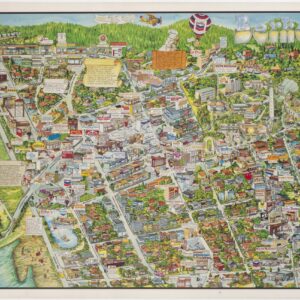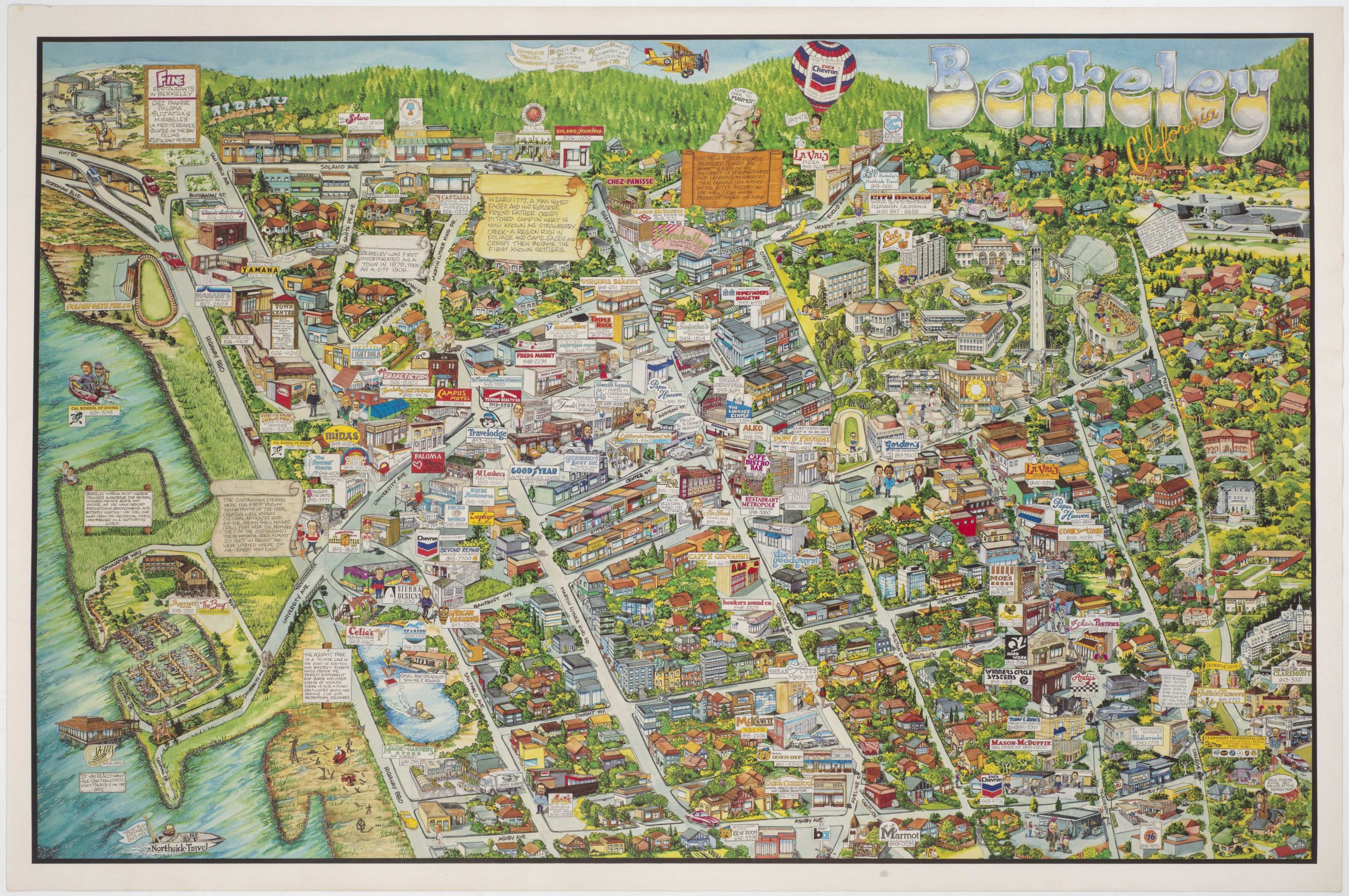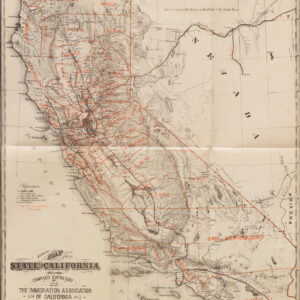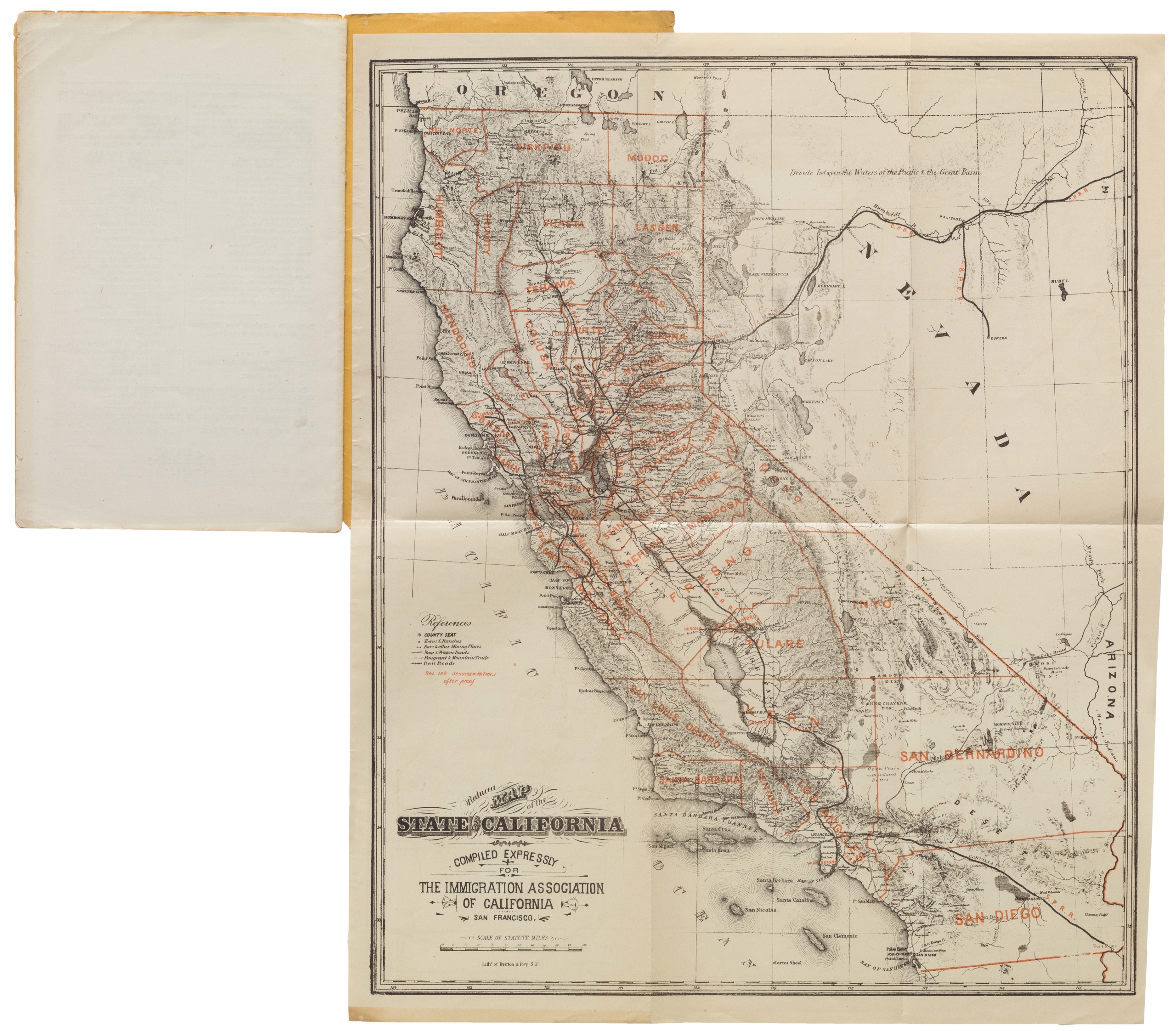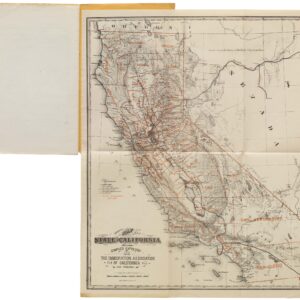A rare early promotional tract map of Encino City, San Fernando Valley.
Map of Encino City Being Encino Tract.
$975
1 in stock
Description
The Map of Encino City, Being Encino Tract (1922) is a historic representation of early urban development in the San Fernando Valley, Los Angeles. It is seemingly unrecorded, as we have yet to find any records in library holdings or on the private market.
The map highlights the planned subdivision of the Encino Tract, part of a larger movement during the early 20th century to transform the San Fernando Valley’s agricultural land into residential and commercial neighborhoods. The map, created under the direction of William Hamilton Hay, provides a snapshot of meticulous urban planning, showcasing streets, residential lots, and designated community spaces.
Key Features of the Map
The map is centered on a grid-like layout with key streets, including Ventura Boulevard, Addison Street, and Rita Street, as well as vertical avenues like Amestoy Avenue and Balboa Avenue. The tract includes numbered lots clearly marked with their dimensions, reflecting a systematic approach to land division. Community-focused spaces such as the Encino School Site and Encino City Park are also noted, showcasing the inclusion of educational and recreational areas in the neighborhood’s design. Ventura Boulevard, a major thoroughfare, anchors the southern edge, connecting Encino to other parts of Los Angeles.
The Encino Tract: Background
The Encino Tract was part of Rancho Los Encinos, a 4,460-acre land grant from 1845, originally used for cattle ranching during the Spanish and Mexican periods. By the early 20th century, the Rancho had been subdivided to accommodate Los Angeles’ growing population. In 1916, Encino Acres was established as part of this trend, and by 1922, it had evolved into the Encino Tract, with clearly defined streets and lots for sale. The tract was marketed to prospective homeowners as a suburban haven, offering proximity to urban centers while retaining a community-oriented, residential character. Over time, this tract became the foundation for modern-day Encino, a neighborhood known for its affluence and historic roots.
William Hamilton Hay: The Developer
The driving force behind the Encino Tract’s development was William Hamilton Hay (1864–1946), a Canadian-born real estate developer who significantly shaped Los Angeles’ urban growth. Hay moved to Los Angeles in the 1880s and became involved in several prominent projects, including the Crescent Heights Tract in West Hollywood. He constructed notable estates, such as “Hayvenhurst,” which later became the Garden of Allah Hotel. In Encino, Hay played a key role in transforming the area, creating subdivisions like the Encino Acres Tract and later the Encino Tract, leaving a legacy evident in street names like Hayvenhurst Avenue and Libbit Avenue (named after his daughter). His work reflects a vision for suburban expansion during a transformative era in Los Angeles’ history.
Significance of the Map
This map offers valuable insights into early 20th-century suburban planning, capturing a moment in Los Angeles history when vast tracts of ranch land were being reshaped into organized communities. The inclusion of schools, parks, and clear lot divisions highlights the careful thought given to balancing residential needs with public amenities. Today, the Encino Tract represents a key chapter in the development of the San Fernando Valley, linking the past to the present as Encino has grown into a vibrant and well-regarded neighborhood.
Cartographer(s):
William Hamilton Hay (1864–1946) was a Canadian-born real estate developer who played a significant role in shaping the urban landscape of Los Angeles during the early 20th century. Born in Hamilton, Ontario, he moved to Los Angeles around 1880 and became instrumental in developing several key areas of the city. One of his notable achievements was the co-development of the Crescent Heights Tract in West Hollywood in 1905. Within this tract, he built his estate, “Hayvenhurst,” at 8080 Sunset Boulevard. This property was later acquired by actress Alla Nazimova and transformed into the renowned Garden of Allah Hotel.
In 1916, Hay expanded his development efforts to the San Fernando Valley with the creation of the Encino Acres Tract. He constructed another estate, also named “Hayvenhurst,” at 4400 Hayvenhurst Avenue in Encino. This development significantly contributed to the suburban growth of the area. Several streets in Los Angeles reflect his influence, such as Hayvenhurst Avenue, named after his estates in Encino. Hayworth Avenue in the Beverly Grove area, originally called “Hay Avenue,” was part of his Crescent Heights development and later renamed. In the Encino Acres Tract, streets like Libbit Avenue and Rubio Avenue are believed to be named after his daughters, Mary Elizabeth (“Libbit”) and Ruby.
Hay’s work played a pivotal role in the expansion and modernization of Los Angeles. His developments and the naming of these streets serve as a lasting legacy of his contributions to the city’s urban growth during a transformative period in its history.
Condition Description
Wear along folds.
References
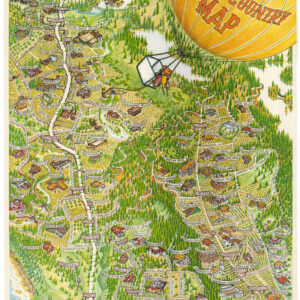
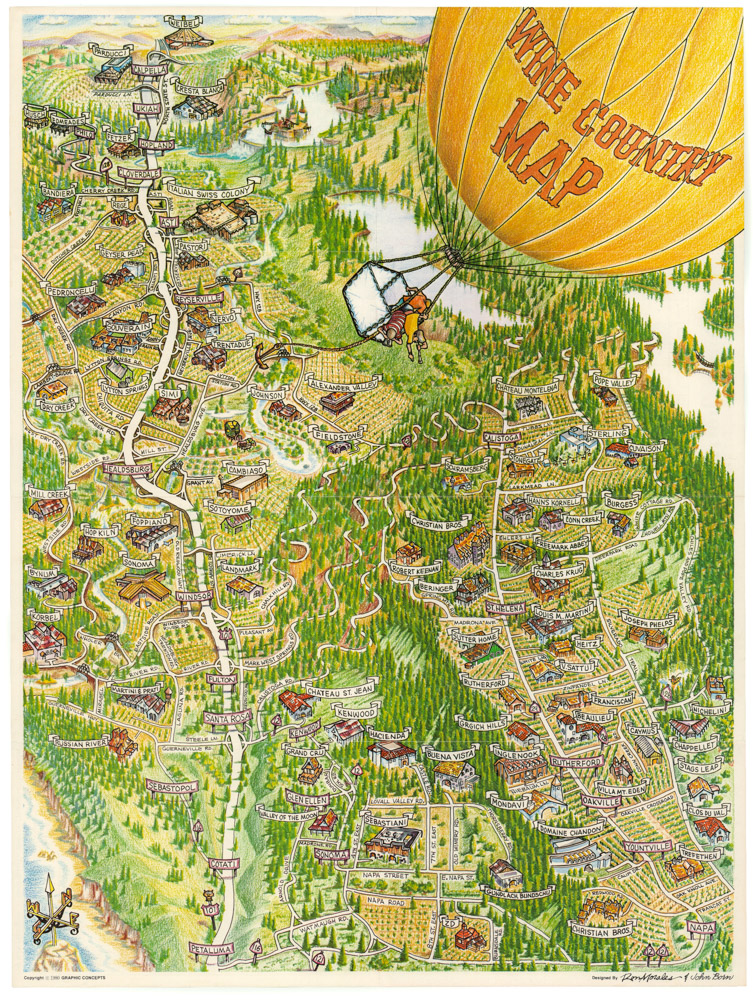
![The Original Silicon Valley Map & Calendar [1994]](https://neatlinemaps.com/wp-content/uploads/2021/06/NL-00909_Thumbnail-300x300.jpg)
![The Original Silicon Valley Map & Calendar [1994]](https://neatlinemaps.com/wp-content/uploads/2021/06/NL-00909_Thumbnail.jpg)
